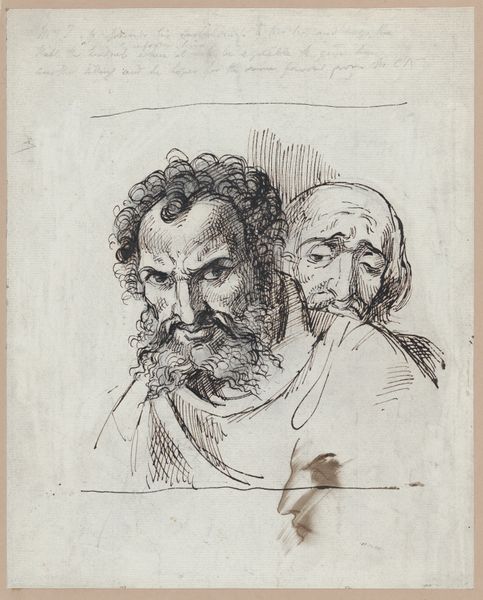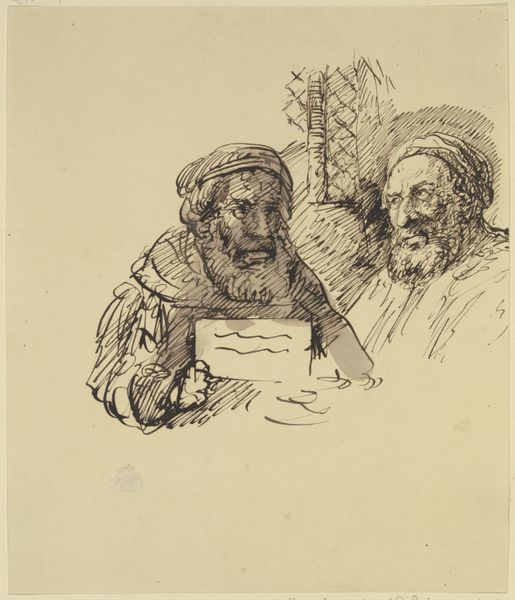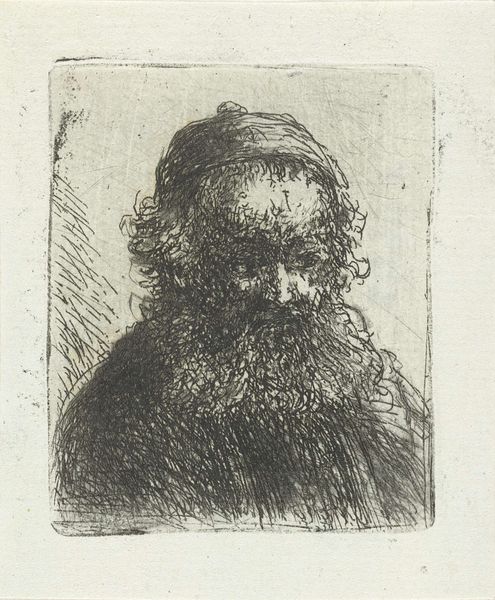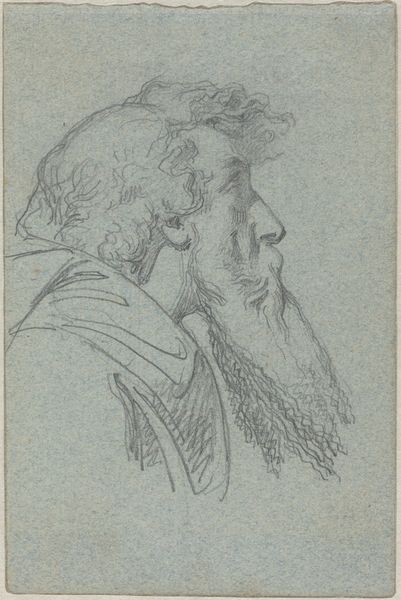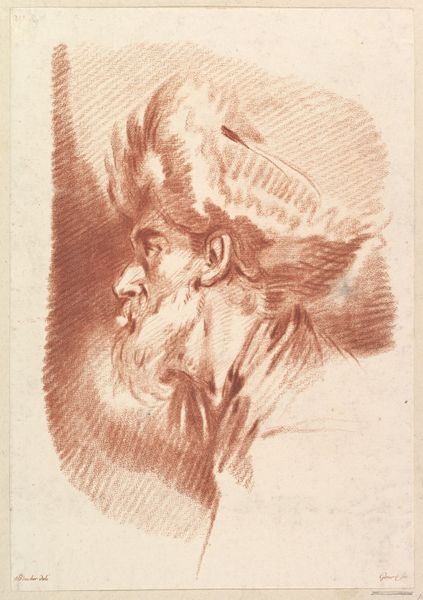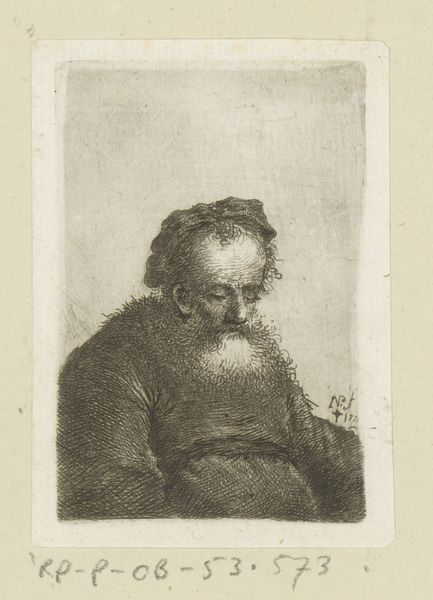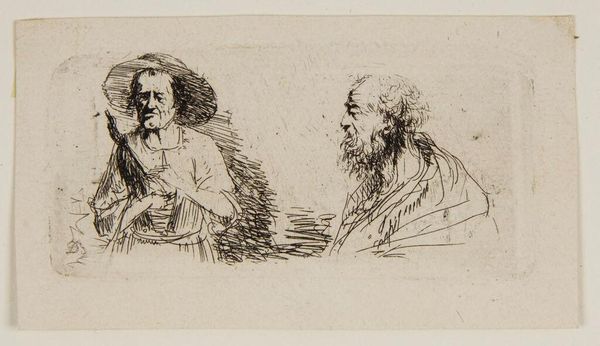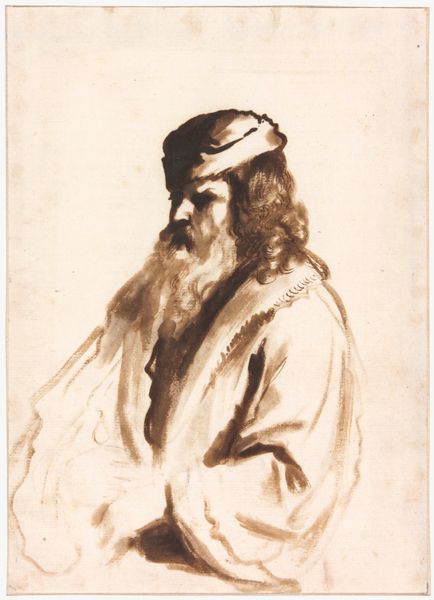
drawing, ink
#
portrait
#
drawing
#
charcoal drawing
#
ink
#
portrait drawing
#
realism
Dimensions: height 90 mm, width 77 mm
Copyright: Rijks Museum: Open Domain
Théodule Ribot created this small watercolor titled "Two Oriental Men, Busts," sometime in the 19th century. During this era, European artists frequently depicted the "Orient" through the lens of Orientalism, a Western perspective that exoticized and often misrepresented non-Western cultures. Here, Ribot's portrayal hints at the prevalent stereotypes of the time. The artist’s choice to represent these men as ‘other’ reinforces a dynamic between the West and the East. Ribot’s artistic choices—the sepia tones and the men’s averted gazes—might evoke a sense of mystery, yet they also risk reducing these individuals to mere aesthetic objects, devoid of personal stories. While seemingly benign, this artwork reflects the complex power dynamics inherent in cross-cultural representation. It invites us to consider the emotional and social implications of portraying individuals through a lens that might not fully capture their identities.
Comments
No comments
Be the first to comment and join the conversation on the ultimate creative platform.
